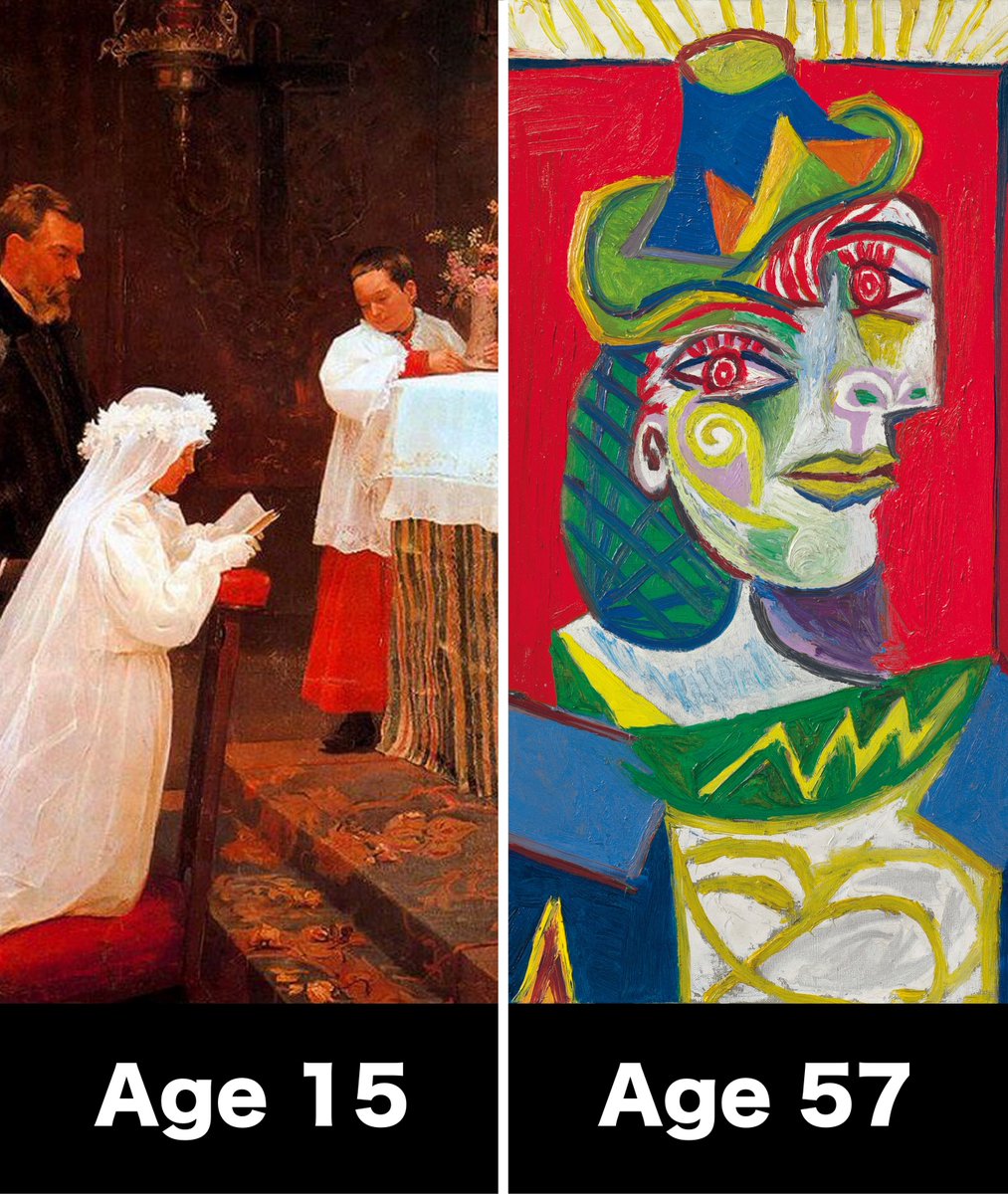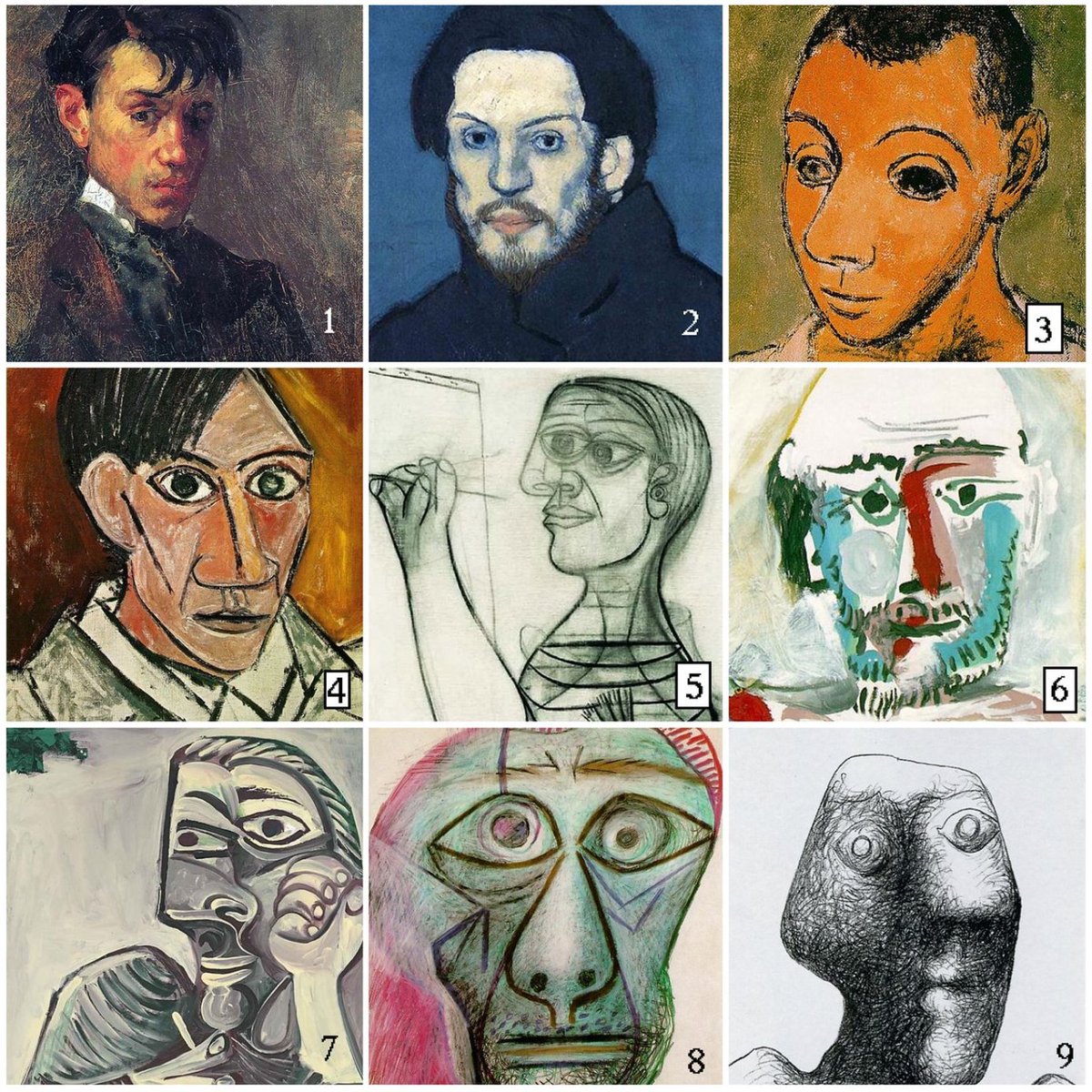https://x.com/the_culturist_/status/1950204089704354116
Why would someone who could paint the picture on the left choose to paint the picture on the right?
A thread... 🧵
Picasso died in 1973 at the age of 91.
His self portraits had changed quite a lot by that age...
But why did he want, as he put it, to "paint like a child"?
The answer has a lot to do with Picasso himself, but also with the changing world in general...
Representational art was in rapid decline in Picasso's day. Photography certainly played a role in reducing the usefulness of accurate painting.
But more than that, art was turning inward...
The world at that time was forced to confront the dark side of humanity, and new art emerged from the trauma.
Surrealism responded to WW1 with fragmented perspectives and nightmarish visions...
The same was true of Picasso's cubism. He saw the fragmented modern world and sought to reorder it — discovering a new order of aesthetics in the process.
His "Weeping Woman" reflected the trauma of the Spanish Civil War, painted just after the bombing of Guernica.
Many think Picasso's art moved linearly, becoming more and more abstract as he confronted this new world, as seemed to be the case with his self portraits…
And this is how he painted her in 1929, pouring into the canvas all his resentment at the end of their marriage.
But in fact, he returned to representational art at various points in his life. When he fell in love with a new woman, he would paint her with reverence at first — this was his wife Olga in 1917.
Perhaps those early portraits of Olga reveal the form Picasso's art took when he was trying to express the highest elements of his humanity…
Picasso wasn't trying to paint with outward beauty when he painted abstracts. His famous "Les Demoiselles d’Avignon" was a condemnation of the brothels of Barcelona that desecrated beauty.
He was more focused on changing art and keeping ahead of his rivals. "Les Demoiselles d’Avignon" (which started cubism) was painted just after Matisse had shocked everyone with this:
It's important to remember that Picasso's changing art was the result of lifelong study. He was comfortable with traditional techniques but desperate to push for new forms of creativity.
He painted these at 14 and 15:
He's often quoted as saying:
"Learn the rules like a pro, so you can break them like an artist."
But much modern art that followed skipped that crucial step. Picasso arguably opened the door to a new, nihilistic art that fell into the hands of the far less talented — and who hadn't learned the rules first.
Picasso was trying to piece together a broken world through child-like creativity.
Later abstract art came to do the opposite. Soon, nothing on the canvas needed to resemble our world at all…





















No comments:
Post a Comment